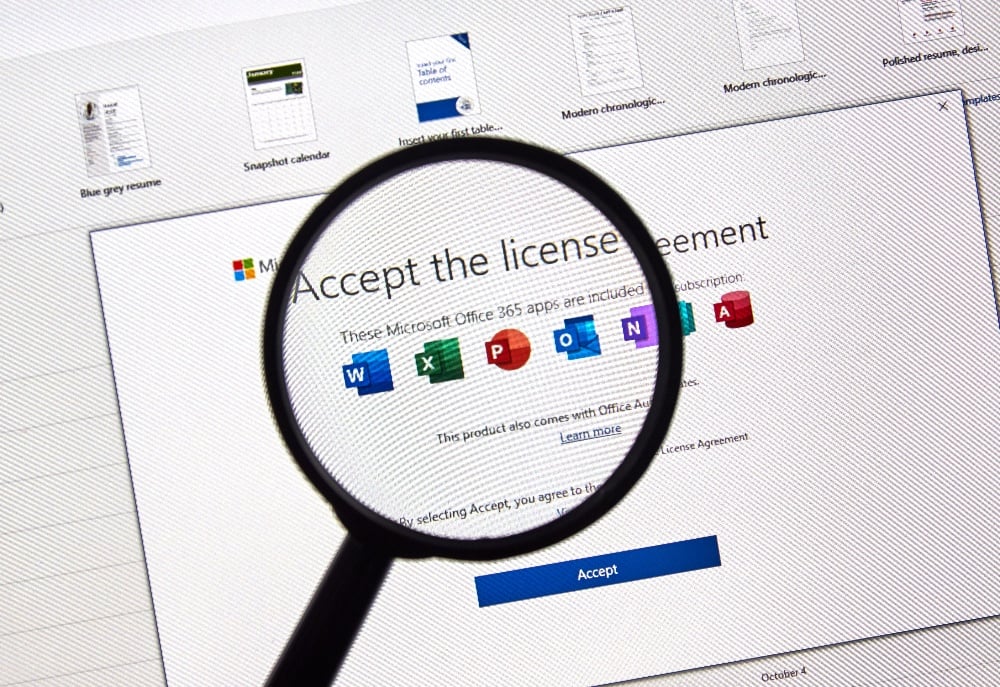Unlock Savings: Mastering Microsoft Licensing Costs
In today’s digital landscape, Microsoft products have become an important part of businesses around the world. Office 365, for example, is leveraged...

The role of the Chief Information Officer (CIO) is adapting in the post-COVID era. As technology continues to rapidly evolve, the role of the CIO has become increasingly complex.
According to leading CIOs at McKinsey’s 18th annual Technology IT Conference, reducing technology debt, consolidating core systems, and rationalizing the application portfolio are top priorities for CIO’s today.
CIO’s have a lot of responsibilities, including:
The role of the CIO is strategic and with so many new technologies and processes that are changing the nature of work, CIO’s must learn how to reduce costs while meeting their new technology and operational initiatives.
CIO’s are embracing technology partners like Microsoft due to their familiarity and ease of use for enhancing productivity, collaboration and scalability.
Microsoft 365 and Azure provide businesses with a unified platform and cloud infrastructure to adopt cloud-based services, implement advanced analytics and reporting, and utilize predictable cost models.
However, controlling costs isn’t always easy for CIOs. Technology transformations are multi-dimensional, involve changing business requirements, and have unforeseen and unexpected expenses. As a result, it’s not uncommon for CIO’s to lack visibility into costs and not have the experience of managing costs while navigating new technology territory.
As a top 1% Microsoft consultancy, we deeply understand the experiences and challenges of CIOs. We have compiled some thoughtful considerations for CIO’s to help them reduce costs in 2023, built on the experience of our interactions with countless CIOs across industries.
Azure cost optimization will help you control and anticipate costs, enhance transparency and visibility, and plan financial impacts of cloud technologies.
Leading up to a migration, Azure cost optimization can help you determine whether a “lift and shift” or “optimization” is your best choice. For example, a lift and shift would refer to moving applications or workloads from an on-premises environment to the cloud without significantly changing the application architecture or infrastructure.
During a migration, an optimization can involve changing an application or workload to take advantage of the benefits of the cloud. This may include redesigning the application architecture to take advantage of cloud-native services, optimizing resource usage, and implementing best practices for cloud security and compliance.
Also, Azure cost optimization can help monitor and reduce resources. Based on the results, you might see that implementing auto-scaling on Virtual Machines (VMs) can help reduce costs by automatically scaling up or down VM resources based on demand. It can also help you utilize reserved instances to provide significant cost savings by allowing your organization to commit to a specific amount of compute capacity for a fixed period.
Make sure you also contact us here at CloudServus so we can provide you with an Azure Cost Optimization Assessment.
This involves consolidating the number of vendors your organization uses for a particular product or service.
This will help to streamline procurement which reduces administrative overhead, facilitates easier contract management, and improves vendor relationships because you can build stronger strategic relationships with key vendors.
By using Microsoft as the primary provider for various products and services, such as operating systems, productivity suites, and collaboration tools, organizations can consolidate their vendors and simplify their procurement process. This can result in reduced administrative overhead, easier contract management, and improved vendor relationships.
Microsoft Intune and Autopilot are two cloud-based services designed to simplify and streamline an organization's management and deployment of Windows devices. This can stop costs from adding up over time.
Microsoft Intune and Autopilot help to streamline device management, including remote management capabilities, licensing management, zero-touch deployment, and security and compliance.
Moving workloads to the cloud can help organizations reduce infrastructure costs. Azure provides the hardware and software infrastructure to run workloads in the cloud, reducing the need for organizations to invest in and maintain their own on-premises infrastructure.
Cloud services can be scaled up or down as needed, allowing organizations to adjust resources based on their changing business needs. Also, Azure utilizes pay-as-you-go pricing models so you can pay for the resources you use. Also, cloud providers handle a lot of the management and maintenance of the infrastructure, freeing up IT staff to focus on more strategic initiatives.
Merging domains and removing on-prem domain controllers can be an excellent way to simplify management, reduce costs, and improve efficiency.
Remember that merging domains and moving to a cloud-based directory service requires careful planning and execution. Organizations should consider compatibility with existing applications, data migration, and user training to ensure a smooth transition.
Microsoft 365 offers several licensing options for small to large organizations. However, for businesses with under 300 employees, Microsoft recommends leveraging their Business SKUs.
These are alternatives to enterprise-level licensing options and are designed to be easy to set up and manage, even for businesses with limited IT resources. This gives employees the essential productivity and collaboration tools they need to succeed without high costs.
For organizations with over 300 seats the time to evaluate Microsoft’s New Commerce Experience is now. For a considerable time, the utilization of conventional procurement contracts such as the Enterprise Agreement (EA) was considered the ultimate benchmark for acquiring perpetual licenses with Software Assurance. With Microsoft’s cloud-first go-to market strategy many customers are finding the New Commerce Experience to be a better fit for their Microsoft investment. The New Commerce Experience offers customers improved flexibility, simplified contracts and partner led discounting resulting in a simplified purchasing experience.
Working with a high-quality Microsoft Licensing Partner can help organizations optimize their licensing subscriptions and programs in several ways.
These partners have a deep understanding of Microsoft's licensing models, subscription plans, and pricing options, and can help organizations make informed decisions about which products and services to invest in. They can also provide guidance on how to best manage and optimize existing licenses, including ensuring compliance with licensing agreements and identifying areas where cost savings can be achieved.
By leveraging the expertise of a Microsoft licensing partner, organizations can optimize their licensing strategy and maximize their return on investment. We’re offering a free licensing optimization engagement with our team of dedicated licensing experts. Thus far, customers have been able to secure an average of 17% in cost savings in comparison to their current investment after optimizing your licensing and onboarding with CloudServus.
At CloudServus we’re dedicated to helping organizations overcome the complexities of their technology transformation. That’s why we started our journey to becoming a top 1% Microsoft consultancy in the first place. We can help guide you every step of the way so you can get back to your work as CIO.
By working with a Microsoft partner, companies can leverage our expertise, resources, and services to achieve your business objectives, streamline your operations, and improve your overall performance.
Contact us at CloudServus to help you reduce costs as a CIO in 2023.

In today’s digital landscape, Microsoft products have become an important part of businesses around the world. Office 365, for example, is leveraged...

Microsoft has announced a major change to its commercial pricing strategy that will significantly impact how organizations purchase Microsoft Online...

Have you worked with your partner to transition from legacy CSP to the New Commerce Experience yet? If you missed 5% promotional discount to...